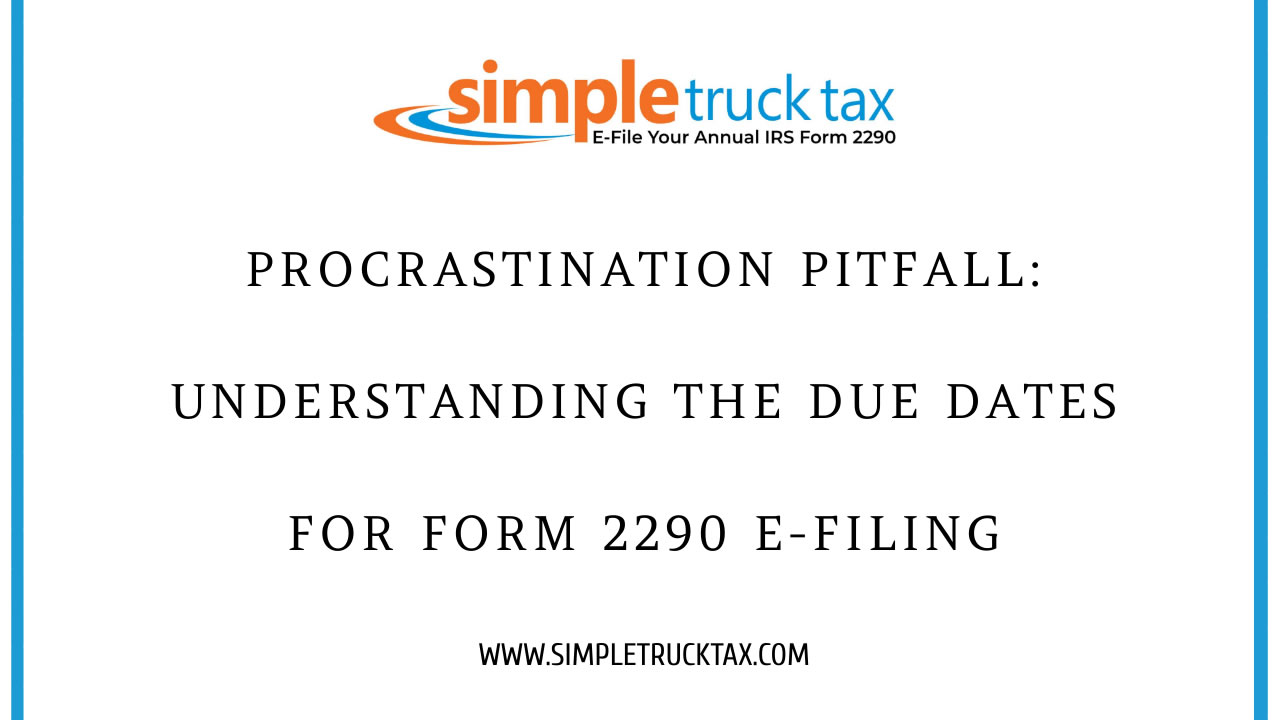
Procrastination Pitfall: Understanding the Due Dates for Form 2290 E-Filing
For many truck owners and operators, nothing is more daunting than dealing with tax filings. Among the various forms and requirements, the Form 2290 is one that often causes confusion and stress. This annual return is used to report and pay the Heavy Highway Vehicle Use Tax (HVUT) on heavy vehicles operating on public highways. One common pitfall that truck owners and operators fall into when it comes to Form 2290 is procrastination. We will discuss the due dates for Form 2290 e-filing and highlight the importance of timeliness.
1. The primary due date:
The Form 2290 due date is typically August 31st of each year. This means that the tax return for the current tax year, which runs from July 1st to June 30th, should be filed by this date. It is important to note that this due date applies to all vehicles that were first used on the road during the month of July.
2. Procrastination consequences:
Failing to meet the August 31st filing deadline can lead to various consequences. The Internal Revenue Service (IRS) imposes penalties for late filing or payment, and these penalties can add up quickly. The penalty for late filing is typically 4.5% of the total tax due, and it increases by an additional 0.54% each month the return is late. Moreover, failing to file can result in the suspension of vehicle registrations.
3. Important exceptions:
While the general due date is August 31st, there are some exceptions to be aware of. If you purchased a new vehicle during the tax year, the due date will be the last day of the month following the month of first use. For example, if you first used a vehicle in September, your due date would be October 31st. Additionally, if you exceed the mileage limit of 5,000 miles for commercial vehicles (7,500 miles for agricultural vehicles) during the tax year, your due date will be the last day of the month following the month in which you exceed the limit.
4. Extension and grace period:
In certain circumstances, you may be eligible for an extension of time to file your Form 2290. For example, if you are unable to file by the August 31st deadline due to a natural disaster or other unforeseen circumstances, you can request an extension. Additionally, if you have a reasonable cause for filing late, the IRS may provide a grace period. However, it is important to note that interest will still accrue on any tax due during the extension or grace period.
Understanding the due dates for Form 2290 e-filing is crucial for truck owners and operators to avoid the procrastination pitfall. Filing late or failing to file can lead to penalties and the suspension of vehicle registrations. By staying aware of the primary due date and any exceptions that may apply, you can ensure timely compliance with your tax obligations. If you do encounter difficulties meeting the deadline, exploring extensions or grace periods may provide some relief. Remember, being proactive and timely in your tax filings will save you from unnecessary stress and financial burdens.
Note: For more information, visit IRS website